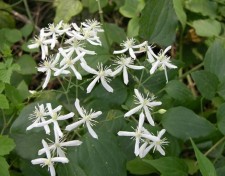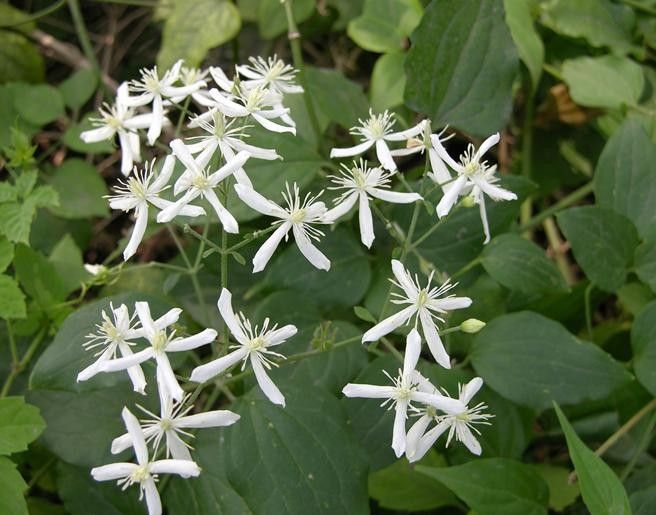 Clematidis has been a powerful ingredient for joint health in East Asian herbal formulas for centuries. In modern times it is still an important herb that is used by therapists for arthritis pain relief. Recent research is also beginning to explain its beneficial effects in herbal skin care, particularly in regard to aging.
Clematidis has been a powerful ingredient for joint health in East Asian herbal formulas for centuries. In modern times it is still an important herb that is used by therapists for arthritis pain relief. Recent research is also beginning to explain its beneficial effects in herbal skin care, particularly in regard to aging.
The root herb, Radix Clematidis (scientific name: Clematis chinensis or Clematis mandshurica), works very well in combination with herbs such as Achyranthis and Puerariae for alleviating muscle and joint damage. Such mixed formulas provide a variety of interactive benefits, including relaxing sore and tight muscles, relieving pain, and reducing swelling and inflammation.
Clematidis in Traditional Medicine
Radix Clematidis is known as Wei Ling Xian in Traditional Chinese Medicine. It is described as an acrid, salty, warm, slightly bitter herb. It is used to expel Wind-Damp (i.e., eliminate pathogenic wind) and to subdue swelling and painful lumps.
These actions of Clematidis are the basis for its use in TCM to treat a wide variety of painful conditions. These include rheumatoid arthritis, gout, strokes, headaches, and lower back pain. Its value in expelling Wind-Damp also underscores its importance for enhancing the functions of liver and bladder channels and for promoting circulation.
New Research on Clematidis
Plant chemists have discovered an array of natural products in this herb that typify members of the buttercup family. One of the main ingredients is a substance called oleanolic acid, which is also found in several other herbs. Early studies on this compound show that it is active in protecting the liver, in inhibiting tumor growth, and in reducing viral growth.
These properties were the main activities cited by a South Korean healthcare company when it sought approval from the U.S. Food and Drug Administration for using Clematidis as a new dietary supplement ingredient.
Studies on how Clematidis works have discovered that the root extracts suppress a key protein complex, called NF-kappaB (NF-kB), which is involved in our cellular responses to stress, UV light, inflammatory hormones, infection, autoimmune diseases, and cancerous tumors.
Skin Care Research
Research at the Chonbuk National University Medical School in Jeonbuk, Japan, found a particularly remarkable activity of Clematidis on human dermal fibroblasts. Dermal fibroblasts are the cells that are responsible for building connective tissue that enables skin to recover from injury. This connective tissue allows the outer skin cells to join together to form the top layer of the skin as it is repaired.
When skin is damaged by exposure to UV light, one of its first responses is the activation of NF-kB. The activation of NF-kB, in turn, suppresses key enzymes that are important for repairing the UV-induced damage. The Japanese study showed that pretreatment of dermal fibroblasts with Clematidis extract, however, completely blocked the activation of NF-kB.
This research underscores the value of Clematidis extracts for preventing and treating skin photoaging by UV light.
A common issue with aging skin is the formation of spots. Spots are formed by the accumulation of the pigment melanin in cells called melanocytes. A recent survey of 90 herbs used in Traditional Chinese Medicine found that Clematidis extracts had one of the two highest melanocyte depigmentation activities among all herbs that were examined.
Skin Care Formulas for Joint Health
The combination of Clematidis with other East Asian herbs harnesses the synergy of multiple ingredients. This is what is behind the Muscle & Joint Pain Relief Gel by Jadience Herbal Formulas. Indeed, it is the foundation of the whole gamut of natural skin care products for joint and muscle in the Muscle & Joint Home Recovery Kit that has become popular with martial artists, Cirque de Soleil, and NFL, NBA, and Olympic athletes.




